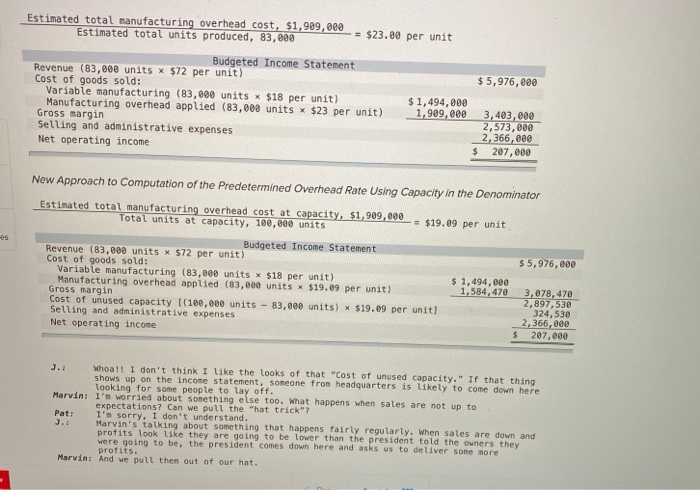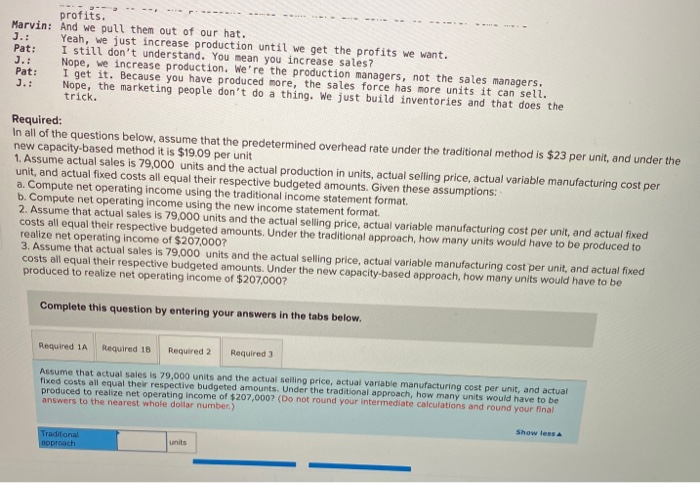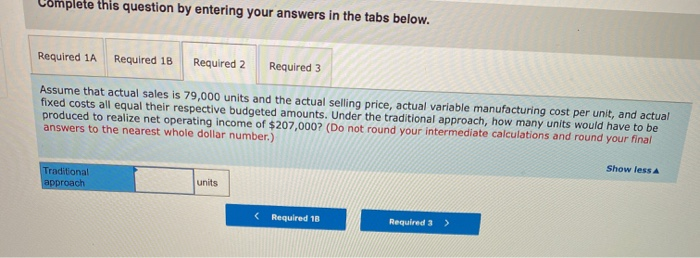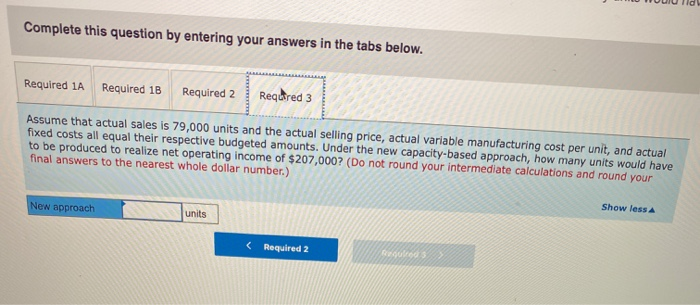Pat Miranda, the new controller of Vault Hard Drives, Inc., has just returned from a seminar on the choice of the activity level in the predetermined overhead rate. Even though the subject did not sound exciting at first, she found that there were some important ideas presented that should get a hearing at her company. After returning from the seminar, she arranged a meeting with the production manager, J. Stevens, and the assistant production manager, Marvin Washington Pat: I ran across an idea that I wanted to check out with both of you. It's about the way we compute predetermined overhead rates. J.: We're all ears. Pat: We compute the predetermined overhead rate by dividing the estimated total factory overhead for the coming year, which is all a fixed cost, by the estimated total units produced for the coming year. Marvin: We've been doing that as long as I've been with the company. And it has been done that way at every other company I've worked at, except at most places they divide by direct labor-hours. Pat: We use units because it is simpler and we basically make one product with minor variations. But, there's another way to do it. Instead of basing the overhead rate on the estimated total units produced for the coming year, we could base it on the total units produced at capacity. Marvin: Oh, the Marketing Department will love that. It will drop the costs on all of our - products. They'll go wild over there cutting prices. Pat: That is a worry, but I wanted to talk to both of you first before going over to Marketing. Aren't you always going to have a lot of unused capacity costs? Pat: That's correct, but let me show you how we would handle it. Here's an example based on our budget for next year. ath in rate of Budgeted (estimated) production Budgeted sales Capacity Selling price Variable manufacturing cost Total manufacturing overhead cost Call Fixed) Selling and administrative expenses (all fixed) Beginning inventories 83.000 units 83, een units 100, eee units $72 per unit $18 per unit $ 1,000,000 $ 2,366,000 Traditional Approach to Computation of the Predetermined Overhead Rate 22.0 per mit Estimated total manufacturing overhead cost $1.909.000 Estimated total units produced 83.000 Estimated total manufacturing overhead cost, $1,909,000 - = $23.00 per unit Estimated total units produced, 83, 800 $ 5,976,000 Budgeted Income Statement Revenue (83,800 units x $72 per unit) Cost of goods sold: Variable manufacturing (83,000 units x $18 per unit) Manufacturing overhead applied (83,000 units x $23 per unit) Gross margin Selling and administrative expenses Net operating income $ 1,494,000 1,909,000 3,403,000 2,573,000 2,366,000 207,000 $ New Approach to Computation of the Predetermined Overhead Rate Using Capacity in the Denominator Estimated total manufacturing overhead cost at capacity, $1,909,000 - $19.99 per unit Total units at capacity, 100,000 units $ 5,976,000 Budgeted Income Statement Revenue (83,000 units x 572 per unit) Cost of goods sold: Variable manufacturing (83,000 units x $18 per unit) Manufacturing overhead applied (83,000 units * $19.09 per unit) Gross margin Cost of unused capacity (100,000 units - 83,000 units) * $19.69 per unit) Selling and administrative expenses Net operating income $ 1,494,000 1,584,478 3,078, 478 2,897,530 324,530 2,366,000 207,000 $ Whoa!! I don't think I like the looks of that "Cost of unused capacity." If that thing shows up on the income statement, someone from headquarters is likely to come down here looking for some people to lay off. Marvin: I'm worried about something else too. What happens when sales are not up to expectations? Can we pull the "hat trick"? Pat: I'm sorry, I don't understand. Marvin's talking about something that happens fairly regularly. When sales are down and profits look like they are going to be lower than the president told the owners they were going to be, the president comes down here and asks us to deliver some more profits. Marvin: And we pull then out of our hat. profits. Marvin: And we pull them out of our hat. Yeah, we just increase production until we get the profits we want. Pat: I still don't understand. You mean you increase sales? Nope, we increase production. We're the production managers, not the sales managers. Pat: I get it. Because you have produced more, the sales force has more units it can sell. Nope, the marketing people don't do a thing. We just build inventories and that does the trick. Required: In all of the questions below, assume that the predetermined overhead rate under the traditional method is $23 per unit, and under the new capacity-based method it is $19.09 per unit 1. Assume actual sales is 79,000 units and the actual production in units. actual selling price, actual variable manufacturing cost per unit, and actual fixed costs all equal their respective budgeted amounts. Given these assumptions: a. Compute net operating income using the traditional income statement format b. Compute net operating income using the new income statement format. 2. Assume that actual sales is 79,000 units and the actual selling price, actual variable manufacturing cost per unit, and actual fixed costs all equal their respective budgeted amounts. Under the traditional approach, how many units would have to be produced to realize net operating income of $207,000? 3. Assume that actual sales is 79,000 units and the actual selling price, actual variable manufacturing cost per unit, and actual fixed costs all equal their respective budgeted amounts. Under the new capacity-based approach, how many units would have to be produced to realize net operating income of $207,000? Complete this question by entering your answers in the tabs below. Required 1A Required 10 Required 2 Required 3 Assume that actual sales is 79,000 units and the actual selling price, actual variable manufacturing cost per unit, and actual fixed costs all equal their respective budgeted amounts. Under the traditional approach, how many units would have to be produced to realize net operating income of $207,000? (Do not round your intermediate calculations and round your final answers to the nearest whole dollar number) Show less Trastonal approach complete this question by entering your answers in the tabs below. Required 1A Required 18 Required 2 Required 3 Assume that actual sales is 79,000 units and the actual selling price, actual variable manufacturing cost per unit, and actual fixed costs all equal their respective budgeted amounts. Under the traditional approach, how many units would have to be produced to realize net operating income of $207,000? (Do not round your intermediate calculations and round your final answers to the nearest whole dollar number.) Show less Traditional approach Required 18 Required 3 > Complete this question by entering your answers in the tabs below. Required 1A Required 1B Required 2 Required 3 Assume that actual sales is 79,000 units and the actual selling price, actual variable manufacturing cost per unit, and actual fixed costs all equal their respective budgeted amounts. Under the new capacity-based approach, how many units would have to be produced to realize net operating income of $207,000? (Do not round your intermediate calculations and round your final answers to the nearest whole dollar number.) Show less New approach units











